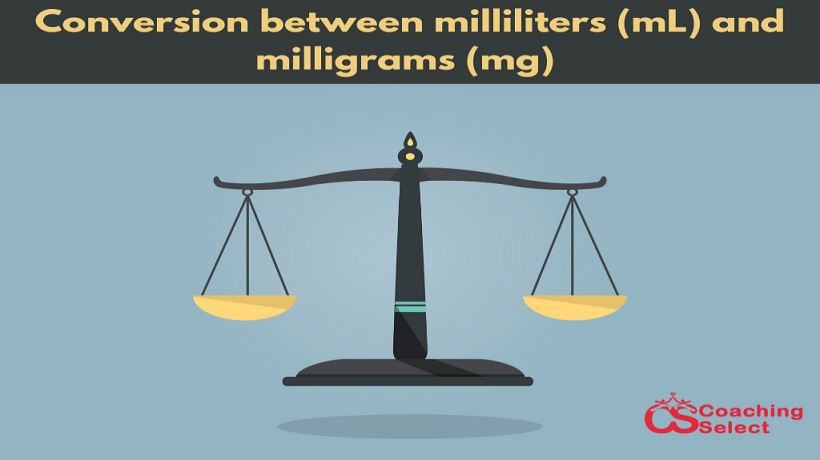mL to mg Conversion and Exploring Different Substances and Solutions
You might have found it easy to convert milliliter to Liter, but you might have faced problems while converting milliliter to milligram. In this blog, we will discuss about it.
July 12, 2023
Career Expert & Blogger

For more education tools and knowledge, please visit CoachingSelect. Here we go with our conversion tool.
Introduction:
Converting between millilitres (mL) and milligrams (mg) is a common task in various scientific disciplines and everyday life. The conversion process is crucial for accurately measuring and administering substances, especially in fields such as medicine, chemistry, and pharmacy. Understanding the conversion factors and applying them correctly is essential to ensure precise dosing and avoid potential errors. In this article, we will delve into the conversion between mL and mg, exploring different substances and solutions commonly encountered in scientific and practical contexts.
Understanding the Basics:
Before we dive into specific examples, it's important to establish a foundational understanding of mL and mg. Milliliters (mL) measure volume by ml to mg calculator representing a unit of capacity or liquid volume, while milligrams (mg) measure mass, representing a unit of weight or quantity of a substance. To convert between mL and mg, one must consider the density of the substance or solution in question.
Converting Liquids:
Water: Water has a density of approximately 1 gram per millilitre (g/mL). Therefore, 1 mL of water is equal to 1,000 mg (1 g).
Common Solvents: Many common solvents, such as ethanol, acetone, or methanol, have densities close to 1 g/mL. Consequently, converting mL to mg is a straightforward process, as 1 mL of these solvents is approximately equal to 1,000 mg.
Converting Solutions:
Converting mL to mg in solutions requires additional consideration, as it involves accounting for the concentration or strength of the solution. This is particularly important when dealing with pharmaceuticals, chemicals, or solutions with varying compositions.
Medications: Pharmaceutical solutions often list the concentration in milligrams per milliliter (mg/mL). To convert mL to mg, simply multiply the volume (in mL) by the concentration (in mg/mL). For example, if a medication has a concentration of 10 mg/mL, 5 mL of the solution would contain 50 mg of the active ingredient.
Chemical Solutions: In chemistry, solutions may have different concentrations or molarities. To convert mL to mg in these cases, additional information about the specific substance and its molar mass is required. By knowing the molar mass (in grams per mole) and the molarity (in moles per liter) of the solution, one can determine the conversion factor to convert between mL and mg.
Dilutions: Diluting a solution involves adding a solvent to reduce the concentration of the solute. In such cases, the mL to mg conversion depends on the dilution ratio. For example, if a solution is diluted by adding 10 mL of water to 10 mL of the original solution, the final concentration would be half. Thus, if the original solution had a concentration of 20 mg/mL, the diluted solution would have a concentration of 10 mg/mL.
Conclusion:
Converting between milliliters (mL) and milligrams (mg) is an essential skill in scientific fields and practical applications. By understanding the density of substances, concentration of solutions, and the molar mass of specific compounds, one can accurately convert mL to mg and vice versa. Precise conversions are crucial for proper dosing, formulation of solutions, and maintaining accuracy in various scientific experiments. Developing proficiency in mL to mg conversions empowers individuals in fields such as medicine, chemistry, and pharmacy to handle substances with precision, ensuring optimal results and minimizing the risk of errors.

